The lens at Split Rock Lighthouse is rotated. This is done to provide the characteristic flash that identified the lighthouse to passing mariners. At the time the lighthouse was built, the method of choice for rotating a lens was to use a clockworks, which works very much like a large grandfather clock. As lighthouses were electrified and automated, it was common for the clockworks mechanism to be removed and replaced with an electric motor. The clockworks in Split Rock remains intact and is still used to rotate the lens for visitors.
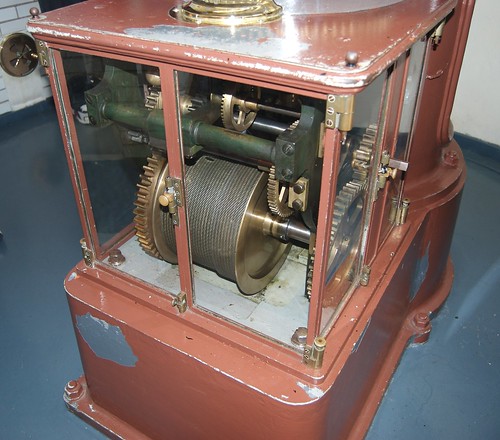
This photo shows the clockworks case before the 2010 centennial restoration.
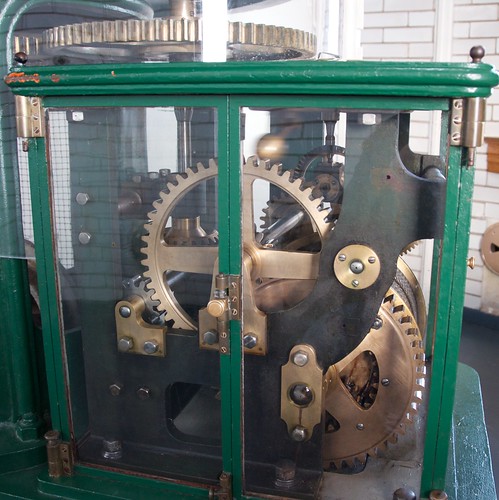
A side view of the clockworks, opposite of the side that the mechanism is actually wound.
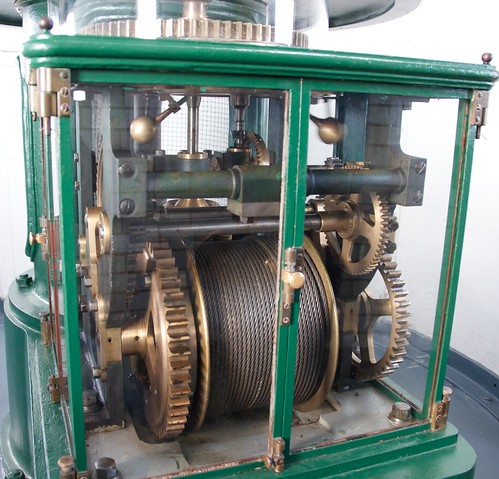
The front of the clockworks. Note that it is blurred because it is moving. The clockworks is wound every day by museum staff so that visitors can see the lens spinning.
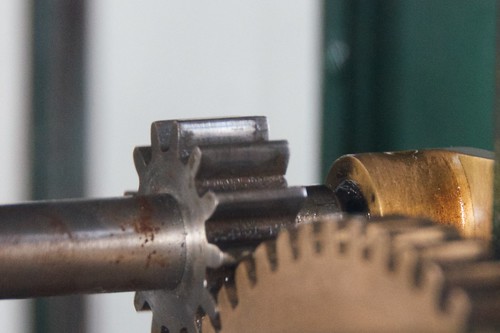
A close up of some of the gears inside the clockworks.
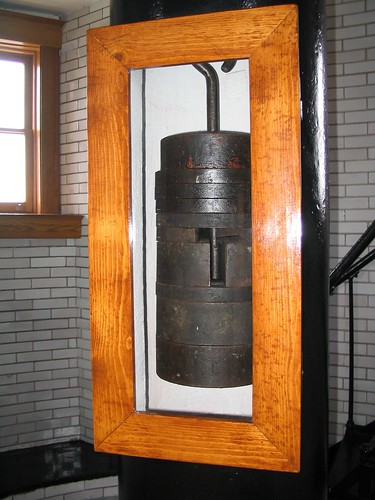
Like all grandfather clocks, Split Rock was equipped with a counterweight, which is what caused the clockworks to move. The weight was wound to the top of the tower and over the course of several hours, it slowly descended down the column in the center of the lighthouse tower. This column was sometimes called a “weight-way”. When it reached the bottom, the clockworks was wound again, bringing the weight back up to the top of the tower.
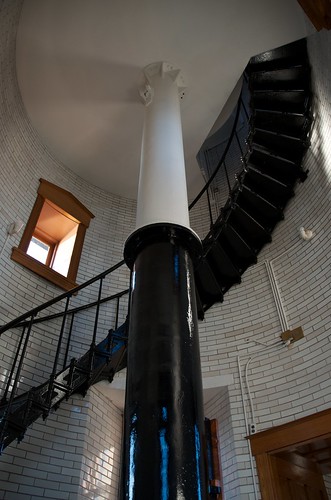
The metal column in the center of the tower housed the counterweight and cable. As the weight descended, it was protected inside this metal column. There is a glass window (see above) that showed when the weight was close to reaching the bottom of the tower, to remind the keepers to wind the clockworks.